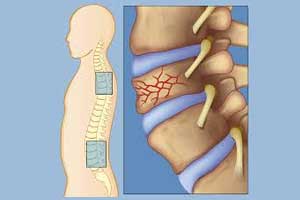- Home
- Editorial
- News
- Practice Guidelines
- Anesthesiology Guidelines
- Cancer Guidelines
- Cardiac Sciences Guidelines
- Critical Care Guidelines
- Dentistry Guidelines
- Dermatology Guidelines
- Diabetes and Endo Guidelines
- Diagnostics Guidelines
- ENT Guidelines
- Featured Practice Guidelines
- Gastroenterology Guidelines
- Geriatrics Guidelines
- Medicine Guidelines
- Nephrology Guidelines
- Neurosciences Guidelines
- Obs and Gynae Guidelines
- Ophthalmology Guidelines
- Orthopaedics Guidelines
- Paediatrics Guidelines
- Psychiatry Guidelines
- Pulmonology Guidelines
- Radiology Guidelines
- Surgery Guidelines
- Urology Guidelines
New Magnetic surgical cement better for healing spinal fractures in kyphoplasty

Now, researchers at the University of Illinois at Chicago report in the journal PLOS ONE, that by adding magnetic particles to the surgical cement used to heal spinal fractures, they could guide magnetic nanoparticles directly to lesions near the fractures. Nanoparticles bound to various drugs have been used to target drugs to specific locations or types of cells in the body. Most commonly, this is achieved by binding a minute amount of drug to the nanoparticle, which is designed to also bind to a specific type of cell, such as a cancer cell.
"By modifying the kyphoplasty bone cement, we can both stabilize the spinal column and provide a targeted drug delivery system. This is a very promising technology as it has the potential to become a surgical option for patients with primary spinal column tumors or tumors that metastasize to the spinal column," said Steven Denyer, a third-year medical student in the UIC College of Medicine and a co-lead author on the paper.
Using a pig model to study the magnetically-guided drug delivery system, Denyer and colleagues were successfully able to steer magnetic nanoparticles to the magnetic cement in the animal's spinal vertebrae. In future studies to test the efficacy of this technique on treating spinal column tumors, the magnetic nanoparticles would be bound to tiny amounts of chemotherapy drugs.
"Our study provides an in vivo proof-of-concept that this novel drug delivery system can help treat underlying causes of spinal fractures in addition to providing structural support," said Abhiraj Bhimani, a fourth-year medical student in the UIC College of Medicine and a co-lead author on the paper.

Disclaimer: This site is primarily intended for healthcare professionals. Any content/information on this website does not replace the advice of medical and/or health professionals and should not be construed as medical/diagnostic advice/endorsement or prescription. Use of this site is subject to our terms of use, privacy policy, advertisement policy. © 2020 Minerva Medical Treatment Pvt Ltd